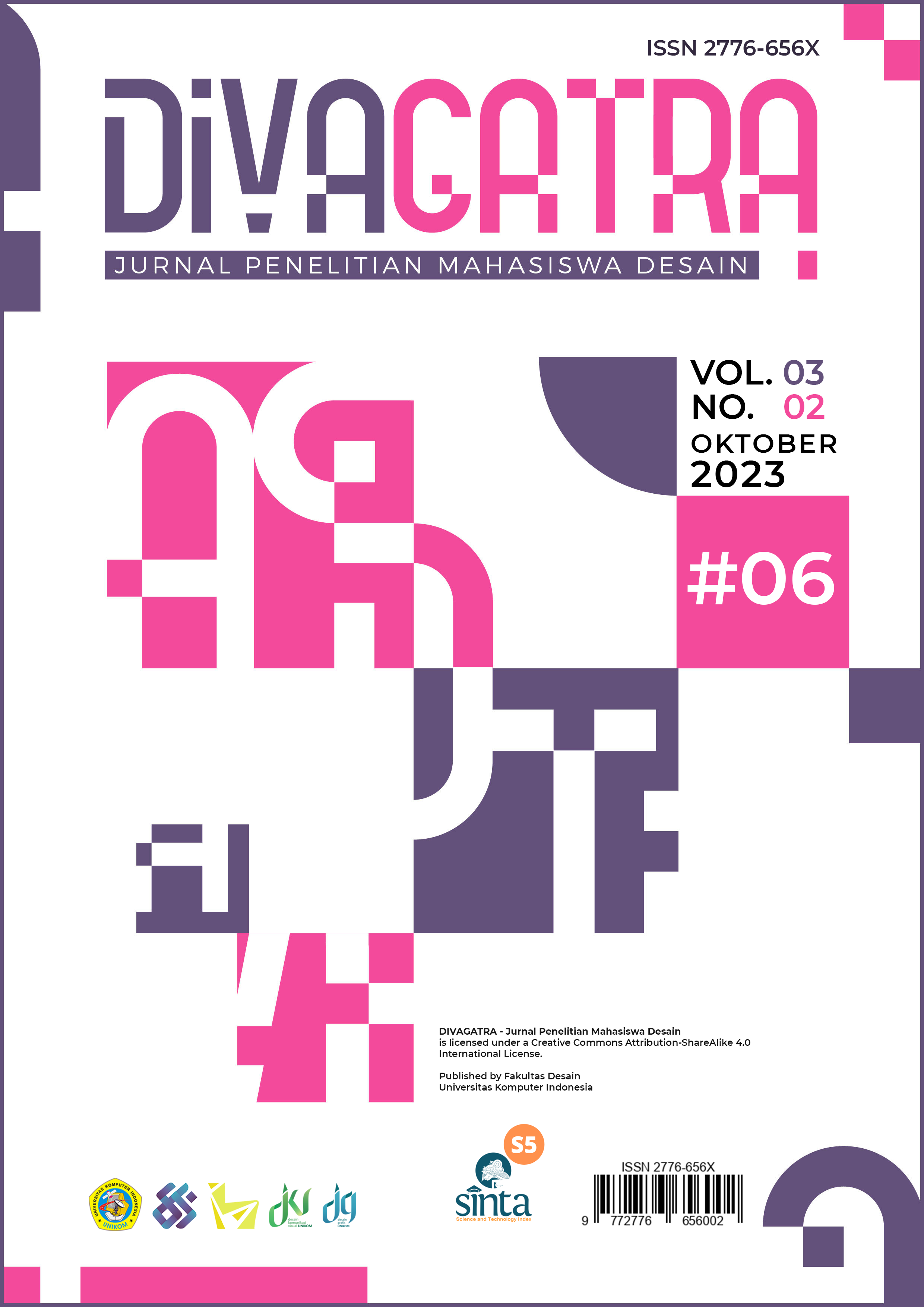E-booklet Sebagai Media Informasi Mengenai Fenomena Cancel Culture di Media Sosial
Main Article Content
Abstract
Cancel culture is a phenomenon where someone will be eliminated because they are considered to have made a mistake either intentionally or unintentionally and are also considered offensive or problematic. This phenomenon is growing in Indonesia and can be found anywhere, but the cancel culture phenomenon is more common on social media because social media is free to express their opinions on something. cancel culture occurs as a form of protest and dislike for people, especially celebrities, who are considered to be against social norms. And this phenomenon is often misdirected, causing an impact on its victims for the hate speech they receive. But unfortunately there are still many people who do not know about this culture. So an information media design is needed as an effort to provide insight into the culture. Especially considering that there is still a lack of information media that discusses cancel culture, especially printed media. Based on this, the design of information media about the cancel culture phenomenon in the realm of social media will be made in the form of an illustrated e-booklet with various interesting visuals.
Article Details
Section
![]()
Authors who publish articles in DIVAGATRA agree to the following terms:
- Authors retain the copyright of the article and grant the journal right of first publication with the work simultaneously licensed under CC-BY-SA or The Creative Commons Attribution–ShareAlike License.
- Authors can enter into separate, additional contractual arrangements for the non-exclusive distribution of the journal's published version of the work (e.g., post it to an institutional repository or publish it in a book), with an acknowledgment of its initial publication in this journal.
- Authors are permitted and encouraged to post their work online (e.g., in institutional repositories or on their website) before and during the submission process, as it can lead to productive exchanges, as well as earlier and greater citation of published work (See The Effect of Open Access).
How to Cite
References
Greater, T. (2021). Johnny Depp Says Cancel Culture Is “So Far Out Of Hand” & “No One Is Safe”, Asks People To “Stand Up” Against “Injustice” – San Sebastian, Deadline.com, diakses pada 30 Oktober 2022 dari https://deadline.com/2021/09/johnny-depp-cancel-culture-so-far-out-of-hand-no-one-is-safe-asks-people-to-stand-up-against-injustice-1234842145/.
Hanifah, H., Afrikani, T., & Yani, I. (2020). Pengembangan Media Ajar E-Booklet Materi Plantae Untuk Meningkatkan Hasil Belajar Biologi Siswa. Journal Of Biology Education Research (JBER), 1(1), 10-16.
Monica, M., & Luzar, L. C. (2011). Efek warna dalam dunia desain dan periklanan. Humaniora, 2(2), 1084-1096.
Rastati, R. (2021). Cancel Culture: Dari Industri Hiburan Korea Selatan hingga Online Nationalism Indonesia, Masyarakat dan Budaya, 23(22), 19-22.
Rochmawati, I. (2020). Target Audience, [Presentasi PowerPoint].
Suprapto, R. (2019). Analisa Strategi Kreatif Pendekatan Unique Selling Proposition Dalam Iklan Nissan 4x4s, Jurnal ADAT, (2), 58-74.
Hidayatullah, T., Sabana, S., & Sanjaya, T. (2017, Oktober). Unsur Karikatural dalam Seni Ruang Publik (Permasalahan Lingkungan di Kawasan Ciroyom Bandung). Di Seminar Nasional Seni dan Desain 2017 (hh. 457-463). Universitas Negeri Surabaya.
Wantoro, W., & Kasmana, K. (2017). Perancangan Font Tapych Berbasis Karakter Visual Motif Tapis Lampung. ANDHARUPA: Jurnal Desain Komunikasi Visual & Multimedia, 3(01), 81-91.
Wardana, K. N. H. (2012). Gaya Pop Art pada Karya Desain Grafis di Indonesia. Prasi: Jurnal Bahasa, Seni, dan Pengajarannya, 7(14), 17-22.

